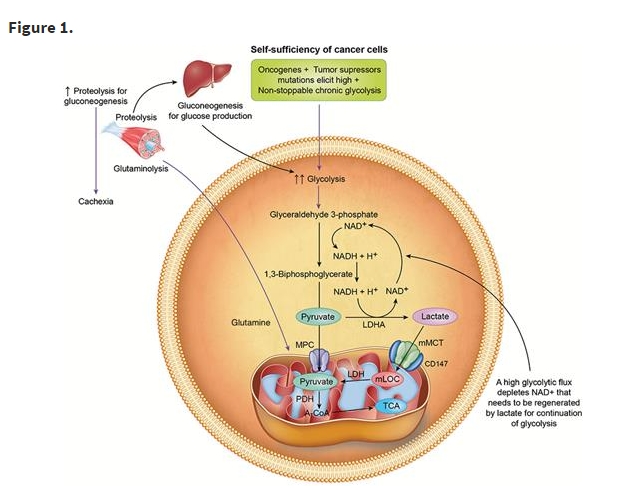Reexamining cancer metabolism: lactate production for carcinogenesis could be the purpose and explanation of the Warburg Effect
Iñigo San-Millán Carcinogenesis (2017) 38 (2): 119-133.
Herein, we use lessons learned in exercise physiology and metabolism to propose that augmented lactate production (‘lactagenesis’), initiated by gene mutations, is the reason and purpose of the Warburg Effect and that dysregulated lactate metabolism and signaling are the key elements in carcinogenesis.
Lactate-producing (‘lactagenic’) cancer cells are characterized by increased aerobic glycolysis and excessive lactate formation, a phenomenon described by Otto Warburg 93 years ago, which still remains unexplained. After a hiatus of several decades, interest in lactate as a player in cancer has been renewed. In normal physiology, lactate, the obligatory product of glycolysis, is an important metabolic fuel energy source, the most important gluconeogenic precursor, and a signaling molecule (i.e. a ‘lactormone’) with major regulatory properties.
In lactagenic cancers, oncogenes and tumor suppressor mutations behave in a highly orchestrated manner, apparently with the purpose of increasing glucose utilization for lactagenesis purposes and lactate exchange between, within and among cells.
Five main steps are identified
(i) increased glucose uptake,
(ii) increased glycolytic enzyme expression and activity,
(iii) decreased mitochondrial function,
(iv) increased lactate production, accumulation and release and
(v) upregulation of monocarboxylate transporters MTC1 and MCT4 for lactate exchange.
Lactate is probably the only metabolic compound involved and necessary in all main sequela for carcinogenesis, specifically: angiogenesis, immune escape, cell migration, metastasis and self-sufficient metabolism.
We hypothesize that lactagenesis for carcinogenesis is the explanation and purpose of the Warburg Effect. Accordingly, therapies to limit lactate exchange and signaling within and among cancer cells should be priorities for discovery.














